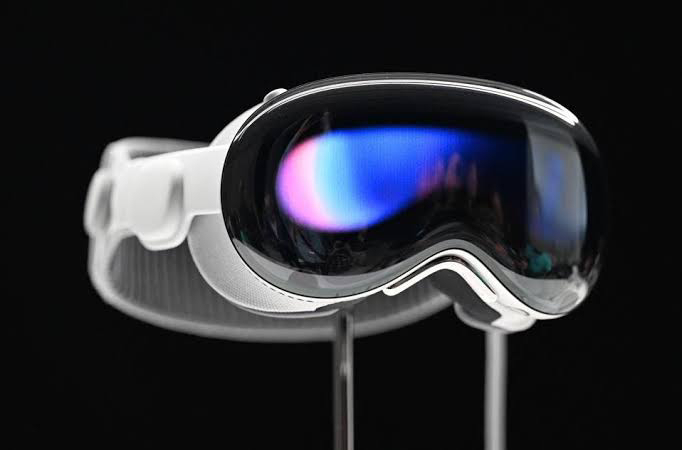Apple has finally entered the mixed reality market with its new Vision Pro VR headset, which was unveiled at its Worldwide Developers Conference on Monday. The device, which costs $3,499 and will be available early next year, promises to seamlessly blend the real world and the virtual world with high-resolution screens, cameras, sensors, and eye-tracking technology, we will explore the features, benefits, and drawbacks of the Vision Pro VR headset, and compare it with other devices on the market.
The Vision Pro VR headset looks like a pair of futuristic ski goggles, with a wire connecting it to a battery pack that can be worn in the pocket. The device is powered by Apple's custom-designed M2 chip and a new processor called R1 for making experiences feel realistic. The headset has two micro-OLED screens inside with a total of 23 million pixels, which is equivalent to two 4K TVs in front of your eyes. The screens can adjust their brightness and contrast according to the ambient light, and can also display HDR content. The device also has a dial on the side that lets you adjust the level of immersion, from fully immersive VR to transparent AR.
The device can be controlled by using eye contact and hand gestures, as well as a virtual keyboard and dictation for typing. Users can access apps, watch movies, write documents, play games, and capture 3D images and videos in a virtual world. The device also features Optic ID, which authenticates users by scanning their iris. This feature also enables eye tracking, which allows users to interact with digital content just by looking at it. For example, users can select an app icon by staring at it for a second, or scroll through a webpage by moving their eyes up or down.
One of the most impressive features of the Vision Pro VR headset is EyeSight, which lets you see the eyes of the person wearing the device on its outer screen. This feature aims to prevent social isolation and awkwardness that often comes with wearing a VR headset. It also allows other people to see what you are seeing on your headset, as well as your facial expressions and emotions. For instance, if you are watching a funny video on your headset, other people can see your eyes smiling and laughing on the outer screen.
Another feature that enhances social interaction is AR FaceTime, which lets you have video calls with other people in a virtual space. You can see their faces as realistic 3D models that are scanned into the headset using TrueDepth cameras. You can also see their surroundings as holograms that are projected onto your environment. You can resize and reposition these holograms as you wish, and even walk around them to see different angles.
The Vision Pro VR headset also offers Spatial Audio, which creates a realistic sound field that matches your head movements and position. You can hear sounds coming from different directions and distances, as well as from above and below you. The device has two speakers near your ears that deliver high-quality sound without blocking your ears. You can also use AirPods or other Bluetooth headphones with the device if you prefer.
The Vision Pro VR headset comes with a two-hour battery life when using the external battery pack that slips into your pocket. You can also use it continuously when plugged in using a USB-C cable. The device supports wireless charging using MagSafe accessories as well. The device is compatible with iPhone 14 or later running iOS 16 or later.
The Vision Pro VR headset is Apple's first attempt at creating a mixed reality device that can offer both immersive VR and transparent AR experiences. However, it is not without its challenges and limitations. The device is very expensive compared to other VR headsets on the market, such as Meta's Quest 2 ($449) or Lenovo's Mirage Solo ($399). It also has a short battery life and requires an external battery pack for longer use. Moreover, it faces competition from other tech giants who have already launched their own VR headsets or are working on them.
The Vision Pro VR headset is not meant for everyone. It is aimed at developers, professionals, and enthusiasts who want to explore the possibilities of spatial computing and mixed reality. It is also a platform for Apple to showcase its vision for the future of computing and communication. Whether it will succeed in creating a mass market for mixed reality devices remains to be seen.





